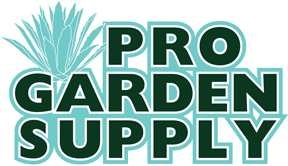There are 5 different soil types that gardeners and growers usually work with. All five are a combination of just three types of weathered rock particles: sand, silt, and clay. How these three particles are combined defines your soil’s type. How it feels to the touch, how it retains water, how it’s managed, etc.
Soil Type: Sandy
Sandy soil has the largest particles among the different soil types. It’s dry and gritty to the touch, and because the particles have huge spaces between them, it can’t retain water.
Water drains rapidly, straight through to places where the roots, particularly those of seedlings, cannot reach. Plants don’t have a chance of using the nutrients in sandy soil more efficiently as they’re swiftly carried away by the runoff.
The upside to sandy soil is that it’s light to work with and warms much more quickly in the spring.
Soil Type: Silty
Silty soil has much smaller particles than sandy soil so it’s smooth to the touch. When moistened, it’s soapy slick. When you roll it between your fingers, dirt is left on your skin.
Silty soil retains water longer, but it can’t hold on to as much nutrients as you’d want it to though it’s fairly fertile. Due to its moisture-retentive quality, silty soil is cold and drains poorly.
Silty soil can also easily compact, so avoid trampling on it when working your garden. It can become poorly aerated, too.
Soil Type: Clay
Clay soil has the smallest particles among these three so it has good water storage qualities. It’s sticky to the touch when wet, but smooth when dry.
Due to the tiny size of its particles and its tendency to settle together, little air passes through its spaces. Because it’s also slower to drain, it has a tighter hold on plant nutrients. Clay soil is thus rich in plant food for better growth.
Clay soil is cold and in the spring, takes time to warm since the water within also has to warm up. The downside is that clay soil could be very heavy to work with when it gets dry. Especially during the summer months, it could turn hard and compact, making it difficult to turn. When clay soil is worked while it’s too wet though, it’s prone to damage.
If moistened soil feels sticky, rolls up easily, and forms into a ball, then you’ve got clay.
The Ideal Soil Type: Loam
The type of soil that gardens and gardeners love is loamy soil. It contains a balance of all three soil materials: sand, silt and clay, plus humus. It has a higher pH and calcium levels because of its previous organic matter content.
Loam is dark in color and is mealy, soft, dry and crumbly, in your hands. It has a tight hold on water and plant food but it drains well, and air moves freely between soil particles down to the roots.
The feel test for loam yields a smooth, partly gritty, partly sticky ball that crumbles easily.
